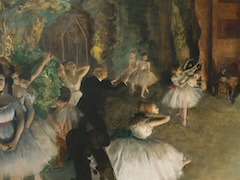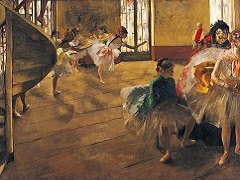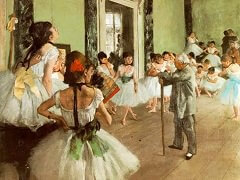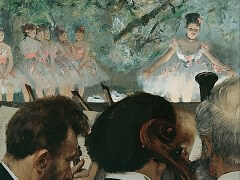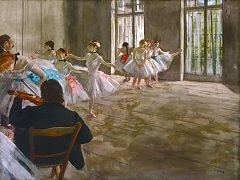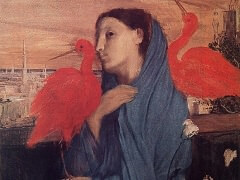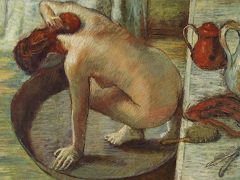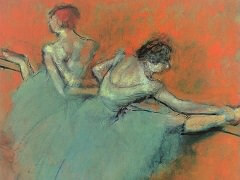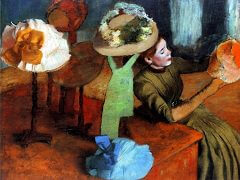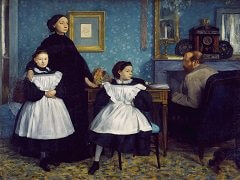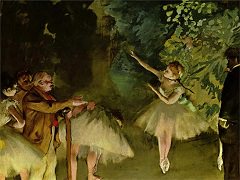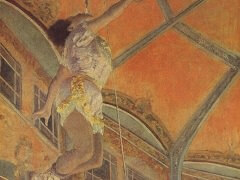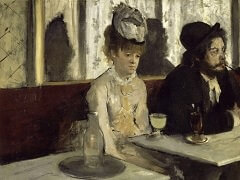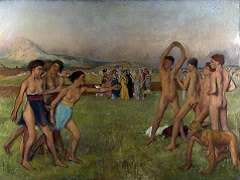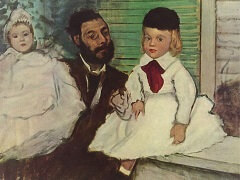Yellow Dancers (In the Wings), 1871 by Edgar Degas
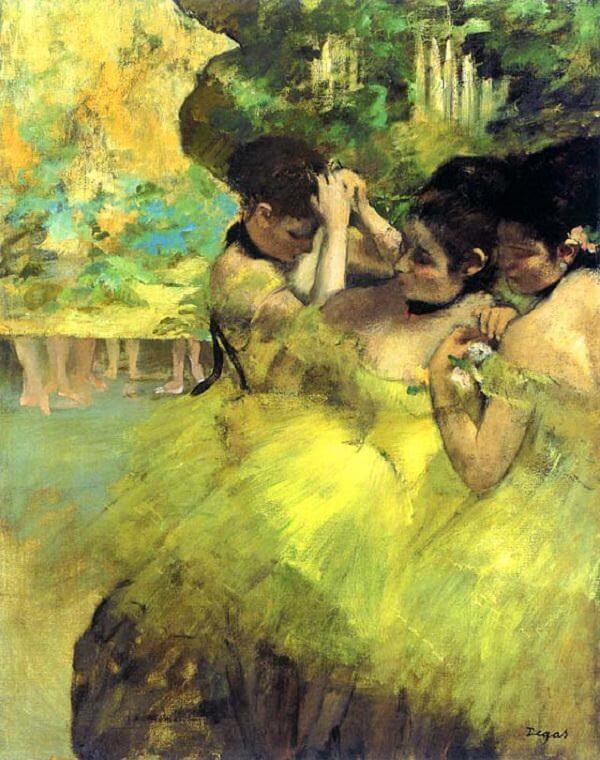
Approximately half of Edgar Degas' entire output of paintings and pastels concerns dancers. Perhaps he recognized a parallel between their art - in which precise, demanding techniques are made to appear effortless and beautiful - and his own. Examining the dancer at rest, in rehearsal, behind the scenes, and onstage, he took an almost documentary approach to this subject. Among the twenty-four works shown by Degas at the second Impressionist exhibition, in 1876, were several ballet scenes, including the Art Institute's Yellow Dancers (In the Wings). Degas executed Yellow Dancers quickly and confidently, applying paint thinly and making few alterations after it had dried. Three ballerinas preen in the foreground of this radical composition. Absorbed in the task of adjusting their costumes, they are bathed in light that seems to be filtered through golden gauze. Their curvaceous forms echo the shape of the stage flat behind them; beyond that artificial barrier, we glimpse the calves and feet of a number of dancers. Such unexpected juxtapositions, cut-off forms, and two-dimensional patterning - effects Degas had absorbed from Japanese woodblock prints - heighten the sense of immediacy.
Degas' preoccupation with dancers was social as well as formal: he often made quite explicit references in his work to the backstage interactions that took place between female performers and their gentlemen patrons. The women's primping, therefore, is not only for the ticket-holding audience, but for other onlookers as well - in this case, the artist himself and the painting's viewers.

